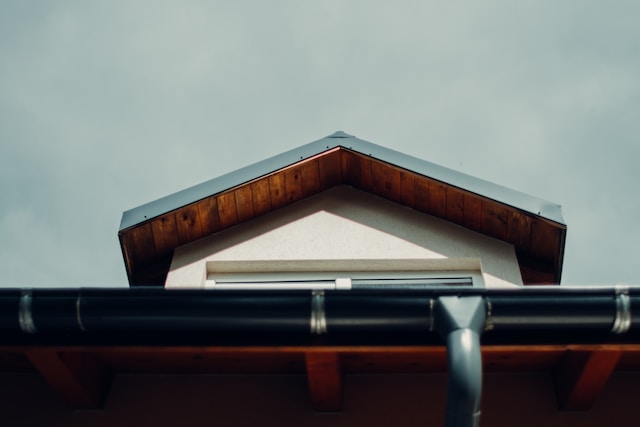How to Choose the Right Gutter Material for Your Home

Rainwater must be directed away from your property by gutters in order to prevent wood rot and paint flaking on the exterior. Additionally, they influence how your home’s façade appears, enhancing or detracting from its curb appeal.
Different gutter materials have various advantages and disadvantages. You can select the ideal gutter color for your house by becoming aware of these distinctions.
Aluminum
Gutters are a critical part of your home, protecting foundations, roofs, siding, and landscaping from water damage. They also help to reduce the risk of paint peeling and deterioration.
Gutter materials come in various hues and patterns, so you may pick one that matches your home’s architectural design and color palette. If you want to make a statement and improve the appearance of your house overall, you can also contrast the color of your gutters with the exterior of your home.
Aluminum is a popular gutter material because it is lightweight, rust-resistant, and affordable. It also comes in various sizes and shapes, including half-round and K-style gutters. K-style gutters have an angled downspout resembling an elbow, which helps direct water away from your home’s structure. Other gutter options include fascia gutters, which require professional installation from gutter installation companies Hillsboro because they are custom-made from a single piece of aluminum to fit your home’s roofline.
Galvanized Steel
Gutters may not be the most glamorous home feature, but they play an important role in preserving the structural integrity of your house. When properly installed and maintained, gutter systems prevent paint peeling, wood rot, and other water damage. Gutters channel rainwater to downspouts, directing the water away from the house’s foundation.
Different types of gutters are available, and each type offers its color options. For example, aluminum gutters are very versatile and come in a large selection of colors. In contrast, galvanized steel gutters have higher corrosion resistance and are more expensive than aluminum.
Many homeowners match their gutters with other major features of their home’s exterior, including the siding, trim, and roof. However, contrasting gutter colors can also look striking. For example, a dark gray gutter can complement a black or charcoal-colored roof. Gutters are available in various styles, with K-style and half-round gutters being the most common choices for modern homes.
Copper
Gutters protect your home from water damage by channeling rainwater away from the foundation, siding, roof, and landscaping. They are essential for maintaining a healthy home and should be a priority for every homeowner. Gutters are available in various styles and materials, including aluminum, galvanized steel, copper, and zinc. A functioning gutter system prevents soil erosion around your home, basement leaks, and structural damage.
A gutter color should complement your roof and your house’s overall exterior color scheme. Neutral colors like beige or gray are versatile and blend well with most exterior color palettes. Alternatively, bold gutter colors can create an eye-catching contrast that adds visual interest to your home. Remember that choosing a vibrant gutter color can impact your home’s curb appeal and may affect its value when it comes time to sell. A professional installer can help you select the perfect gutter color for your property.
Stainless Steel
Gutters are an important feature of any home, protecting it from rainwater damage by channeling it away from the structure. They also add curb appeal and can enhance resale value. However, not all gutters are made from the same material, and not all colors work well with every exterior color palette. This article explores the various gutter materials, their pros and cons, and how to choose the right one for your home.
The first step in installing a new gutter system is planning it with the homeowner and contractor to ensure it is properly positioned for efficiency. The gutters are then mounted to the fascia board, and downspouts are placed at designated locations throughout the system to guide water into them and away from the house. If the gutters are leaking or clogged, the next step is to clean them out and repair any leaks or broken joints. This can be done by a professional and may include re-soldering the joints.



